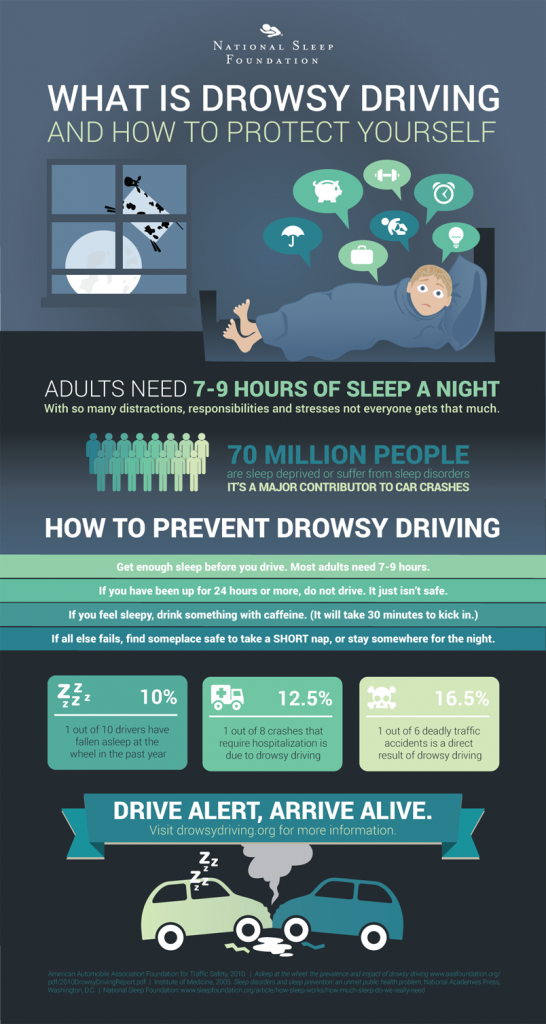While daylight saving time means that warmer weather is on the way, it also means that you will lose an hour of sleep. Changes to your sleep schedule take a few days to adjust, meaning that you or others may be feeling drowsy when driving.
According to a study from Current Biology, the daylight saving time transition acutely increases fatal traffic accident risk by 6% in the US.
DID YOU KNOW?
According to the National Sleep Foundation:
- 100,000 crashes each year are caused by fatigued drivers
- 55% of drowsy driving crashes are caused by drivers less than 25 years old
The CDC states that drowsy driving is similar to drunk driving.
- Being awake for at least 18 hours is the same as someone having a blood content (BAC) of 0.05%.10-12
- Being awake for at least 24 hours is equal to having a blood alcohol content of 0.10%. This is higher than the legal limit (0.08% BAC) in all states
TIPS FOR SAFE DRIVING
The National Sleep Foundation states that research has identified young males, shift workers, commercial drivers, and people with untreated sleep disorders or short-term or chronic sleep deprivation as being at increased risk of having a fall-asleep crash.
Some symptoms of sleepiness provided by AAA include but are not limited to:
- Having trouble keeping your eyes open and focused
- The inability to keep your head up
- Daydreaming or having wandering, disconnected thoughts
- Drifting from your lane or off the road, or tailgating
- Yawning frequently or rubbing your eyes repeatedly
- Missing signs or driving past your intended exit
- Feeling irritable and restless
- Being unable to remember how far you have traveled or what you have recently passed
THE DARK SIDE OF SPRING
Depending on what time you leave your house in the morning, it may be dark out. According to the National Highway Traffic Safety Association, driving in the dark is more dangerous than driving in the day.
A GLARING REMINDER
In contrast, the change of time means more sunlight in the evening. The sun is positioned lower in the sky, meaning that you will be staring straight into it as you drive.
AAA offers these tips for motorists when driving into the sun:
- Utilize your sun visor – it can help to block out the sun.
- Invest in polarized sunglasses – they can help reduce glare
- Drive with your headlights on to increase your visibility to other drivers
- Keep your windshield clean, inside and out





